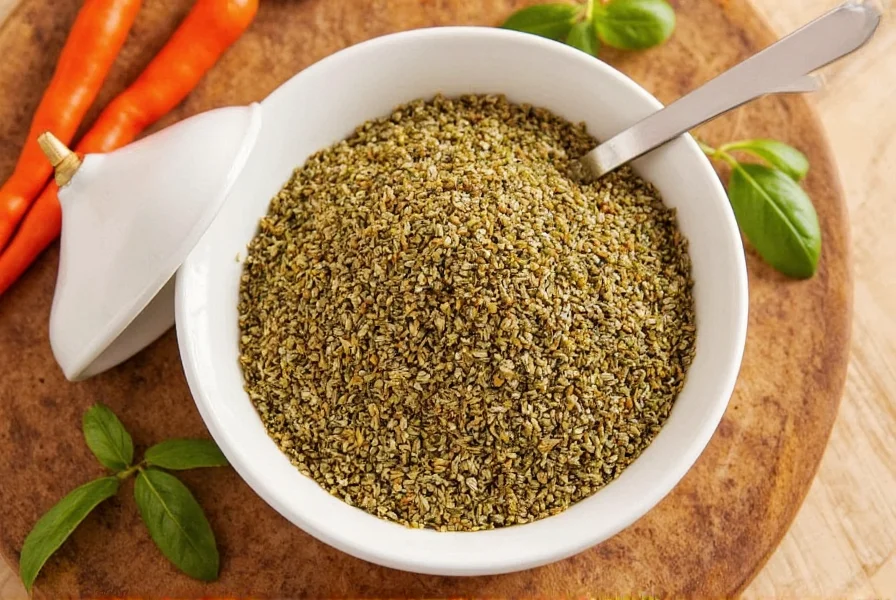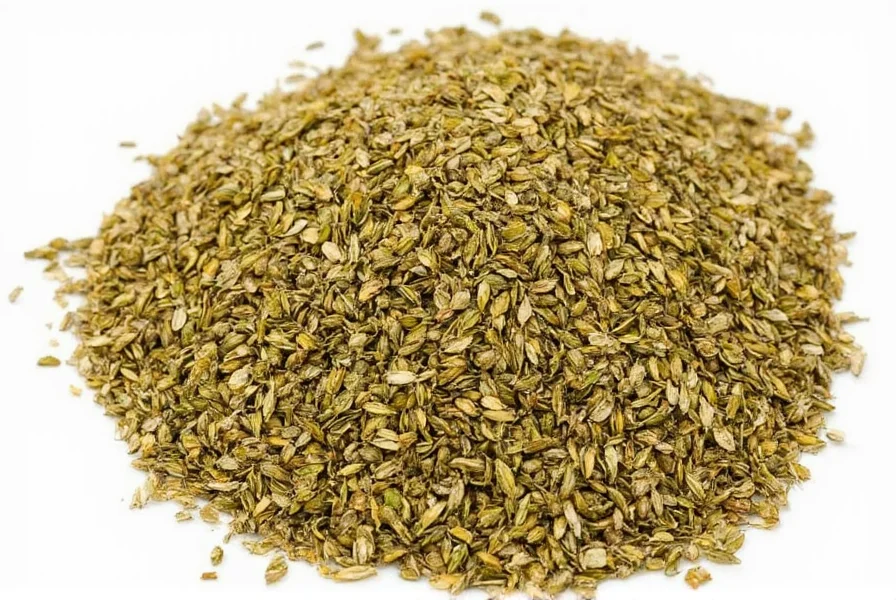Fenugreek leaves, known as kasuri methi in Indian cuisine, provide a distinctive bitter-earthy flavor essential to many traditional dishes. When you need fenugreek leaves alternative options, understanding the flavor profile you're trying to replicate is crucial for successful substitution. This guide explores practical replacements that maintain recipe integrity while accommodating ingredient availability issues.
Understanding Fenugreek Leaves and Their Culinary Role
Fenugreek leaves come in fresh and dried forms, with dried fenugreek leaves (kasuri methi) being more commonly used in cooking outside regions where fresh leaves are readily available. These leaves contribute a complex flavor profile—bitter, earthy, with subtle maple-like notes—that enhances curries, dals, and breads. The bitterness balances rich ingredients while the earthiness adds depth to vegetarian and meat dishes alike.
When seeking fenugreek leaves substitute solutions, consider why you need an alternative. Common reasons include:
- Unavailability of dried fenugreek leaves in local stores
- Allergic reactions to fenugreek
- Desire for milder flavor profiles
- Experimentation with different taste dimensions
Top Fenugreek Leaves Alternatives Ranked by Effectiveness
Not all substitutes work equally well across different recipes. The best fenugreek leaf replacement depends on your specific dish and desired flavor outcome.
Dried Fenugreek Seeds (Methi Dana)
When searching for what can i use instead of dried fenugreek leaves, dried fenugreek seeds offer the closest flavor match. Though more intense and slightly more bitter, they share the same chemical compounds responsible for fenugreek's distinctive taste.
Usage ratio: Use 1/4 teaspoon of crushed seeds for every tablespoon of dried leaves. Toast seeds lightly before crushing to enhance flavor release. Ideal for robust dishes like butter chicken and lamb curries where the stronger flavor won't overwhelm.

Celery Leaves
Celery leaves provide a surprisingly effective fenugreek leaves alternative for those seeking a more accessible option. They share similar earthy notes without the pronounced bitterness.
Usage ratio: Substitute equal parts fresh celery leaves for fresh fenugreek leaves. For dried fenugreek leaves, use half the amount of dried celery leaves. Best suited for vegetable dishes and lighter curries where intense bitterness would be overpowering.
Fennel Seeds
Fennel seeds offer a milder, sweeter alternative that works well when you need a fenugreek leaf substitute in curry recipes requiring less bitterness. The anise-like flavor complements many Indian spices while providing necessary earthiness.
Usage ratio: Use 1/2 teaspoon crushed fennel seeds per tablespoon of fenugreek leaves. Particularly effective in fish curries and vegetable preparations where a subtle licorice note enhances rather than competes with other flavors.
Comprehensive Fenugreek Substitution Guide
| Alternative | Flavor Match | Best For | Substitution Ratio | Limitations |
|---|---|---|---|---|
| Dried fenugreek seeds | 9/10 | Rich meat curries, dals | 1/4 tsp seeds = 1 tbsp leaves | Stronger bitterness, requires toasting |
| Celery leaves | 7/10 | Vegetable dishes, light curries | 1:1 fresh, 1:2 dried | Milder flavor, less complex |
| Fennel seeds | 6/10 | Fish curries, paneer dishes | 1/2 tsp = 1 tbsp leaves | Sweet anise note changes profile |
| Mustard greens | 5/10 | North Indian vegetarian dishes | 1:1 fresh greens | Stronger bitterness, different texture |
| Herb blend (marjoram, oregano, thyme) | 4/10 | Emergency substitutions | 1:1 equal parts blend | Lacks distinctive fenugreek notes |
Choosing the Right Alternative for Your Recipe
Selecting the best fenugreek leaves substitute in curry applications requires considering several factors:
Recipe Type: Rich meat curries tolerate stronger substitutes like fenugreek seeds, while delicate fish preparations work better with fennel or celery leaves. For paneer dishes, the herbal blend provides sufficient earthiness without overwhelming the cheese's mild flavor.
Flavor Balance: Remember that fenugreek's bitterness balances sweetness in many Indian dishes. When using less bitter alternatives, you may need to adjust other ingredients—adding a pinch of asafoetida (hing) can help restore balance when using milder substitutes.
Timing of Addition: Unlike dried fenugreek leaves which are often added at the end of cooking, some substitutes require different timing. Fenugreek seeds benefit from early addition to mellow their bitterness, while fresh celery leaves should be added later to preserve their delicate flavor.
Common Substitution Mistakes to Avoid
Many home cooks make critical errors when replacing fenugreek leaves that compromise their dishes:
- Over-substituting: Using equal amounts of fenugreek seeds instead of adjusting for intensity creates overpowering bitterness
- Ignoring texture differences: Fresh alternatives behave differently than dried in sauces and gravies
- Misjudging flavor development: Some substitutes require longer cooking to develop proper flavor integration
- Not adjusting complementary spices: Successful substitution often requires tweaking other seasonings to maintain balance

Practical Application Tips
When implementing your chosen fenugreek leaf alternatives for Indian recipes, follow these professional techniques:
For dried alternatives, crush between your palms before adding to release essential oils. Add substitutes at appropriate stages—earlier for seeds that need flavor development, later for fresh herbs that lose potency with prolonged cooking. Always taste and adjust; most substitutions require minor tweaks to salt, acid, or complementary spices to achieve balance.
When using the herbal blend alternative (equal parts dried marjoram, oregano, and thyme), add a pinch of sugar to mimic fenugreek's subtle sweetness. This combination works surprisingly well in tomato-based curries where the individual herbal notes blend seamlessly.
Conclusion
Finding suitable fenugreek leaves alternatives doesn't mean compromising your dishes. By understanding the flavor profile you're trying to replicate and selecting the appropriate substitute based on your specific recipe, you can maintain culinary authenticity even without this specialty ingredient. The key lies in matching the substitute to both the dish type and the role fenugreek plays in that particular preparation. With these practical alternatives and substitution guidelines, you'll never need to abandon a recipe due to unavailable ingredients.
Can I use fenugreek seeds instead of fenugreek leaves in curry?
Yes, you can substitute fenugreek seeds for fenugreek leaves in curry using a 1:4 ratio (1/4 teaspoon crushed seeds for every tablespoon of dried leaves). Toast the seeds lightly before crushing to enhance flavor release. This substitution works best in robust meat curries where the stronger flavor won't overpower other ingredients.
What's the best substitute for dried fenugreek leaves in butter chicken?
For butter chicken, dried fenugreek seeds provide the closest flavor match when used at 1/4 teaspoon per tablespoon of leaves. If seeds aren't available, a combination of equal parts dried marjoram, oregano, and thyme (1:1 ratio) with a pinch of sugar works well. Add the substitute during the final 5 minutes of cooking to preserve flavor complexity.
How do I substitute fresh fenugreek leaves when making palak paneer?
For palak paneer, fresh celery leaves make the best substitute for fresh fenugreek leaves at a 1:1 ratio. They provide similar earthy notes without overwhelming the spinach's delicate flavor. Add them during the last 2-3 minutes of cooking to preserve their fresh flavor. If using dried alternatives, reduce the amount by half and add earlier in the cooking process.
Can I skip fenugreek leaves entirely in Indian recipes?
You can omit fenugreek leaves, but your dish will lack its characteristic earthy-bitter complexity. For better results, use a substitute rather than skipping entirely. In emergency situations, add a pinch of asafoetida (hing) and a small amount of dried thyme to approximate some of fenugreek's flavor dimensions, though the result won't be identical to using proper substitutes.
Why does my fenugreek substitute taste too bitter?
Overly bitter substitutes usually result from using too much fenugreek seeds or mustard greens. Remember the 1:4 ratio for seeds (1/4 tsp seeds = 1 tbsp leaves). To fix excessive bitterness, add a small amount of sugar or cream, increase tomatoes for acidity balance, or add complementary spices like garam masala to distract from the bitterness while maintaining flavor complexity.











 浙公网安备
33010002000092号
浙公网安备
33010002000092号 浙B2-20120091-4
浙B2-20120091-4